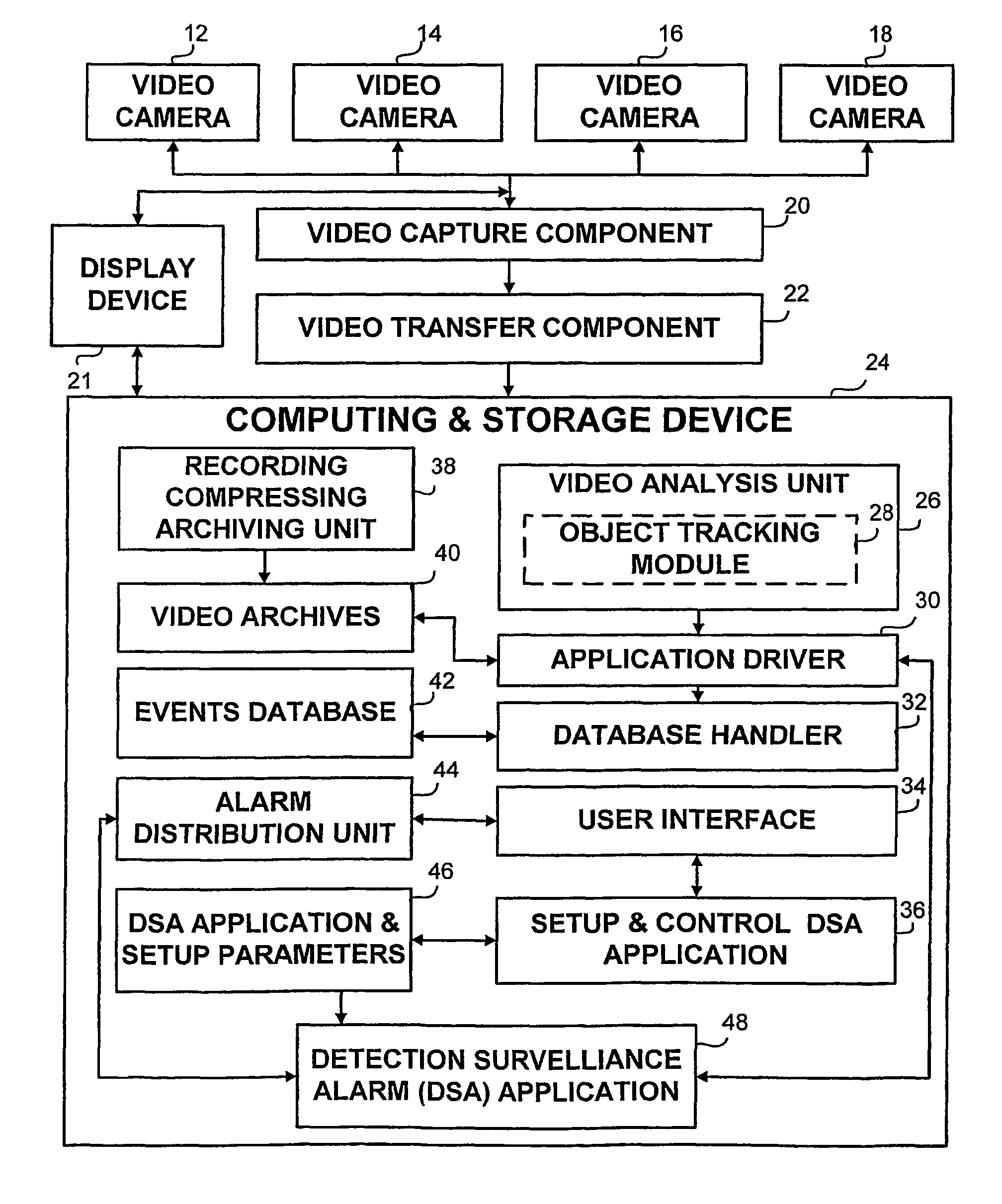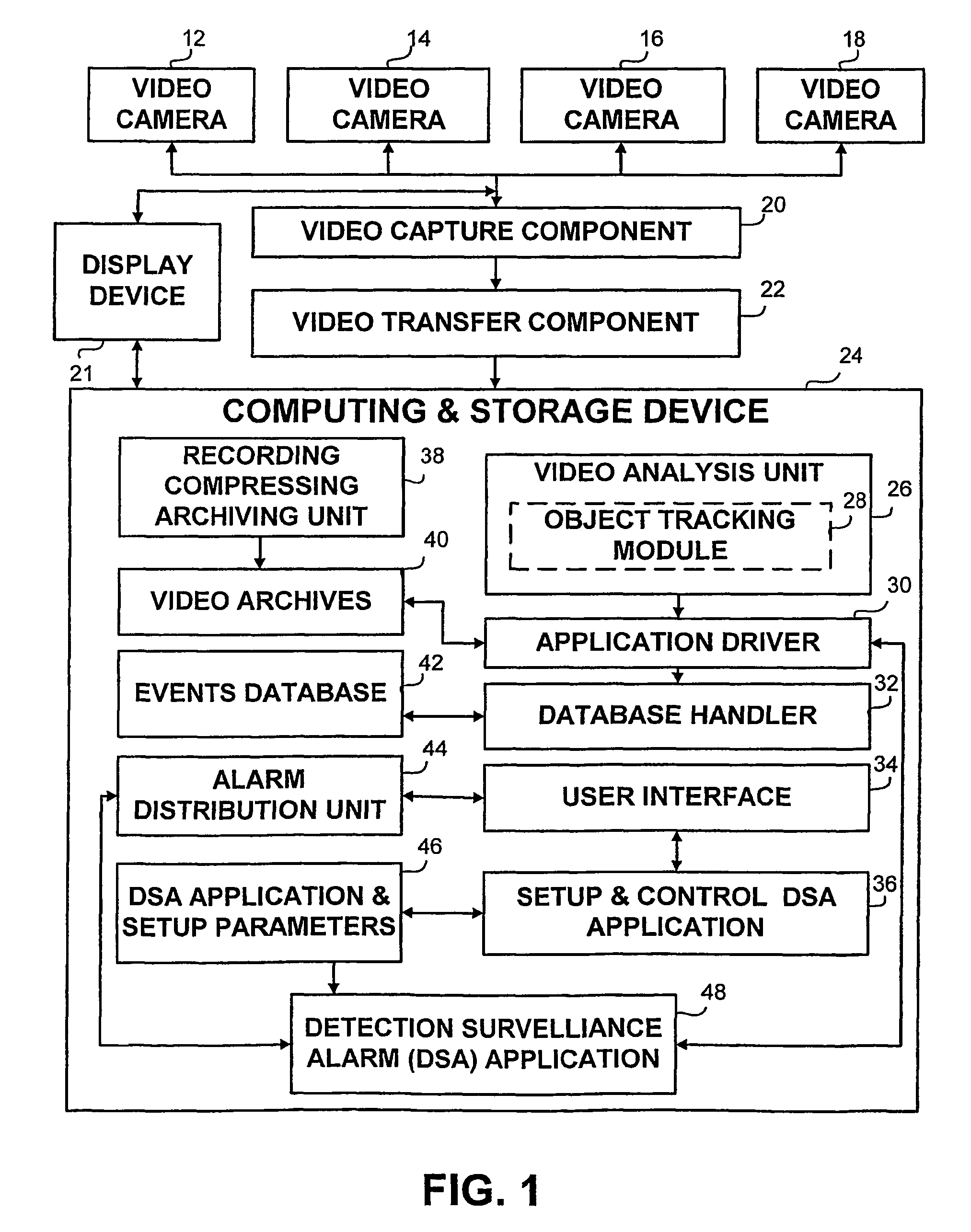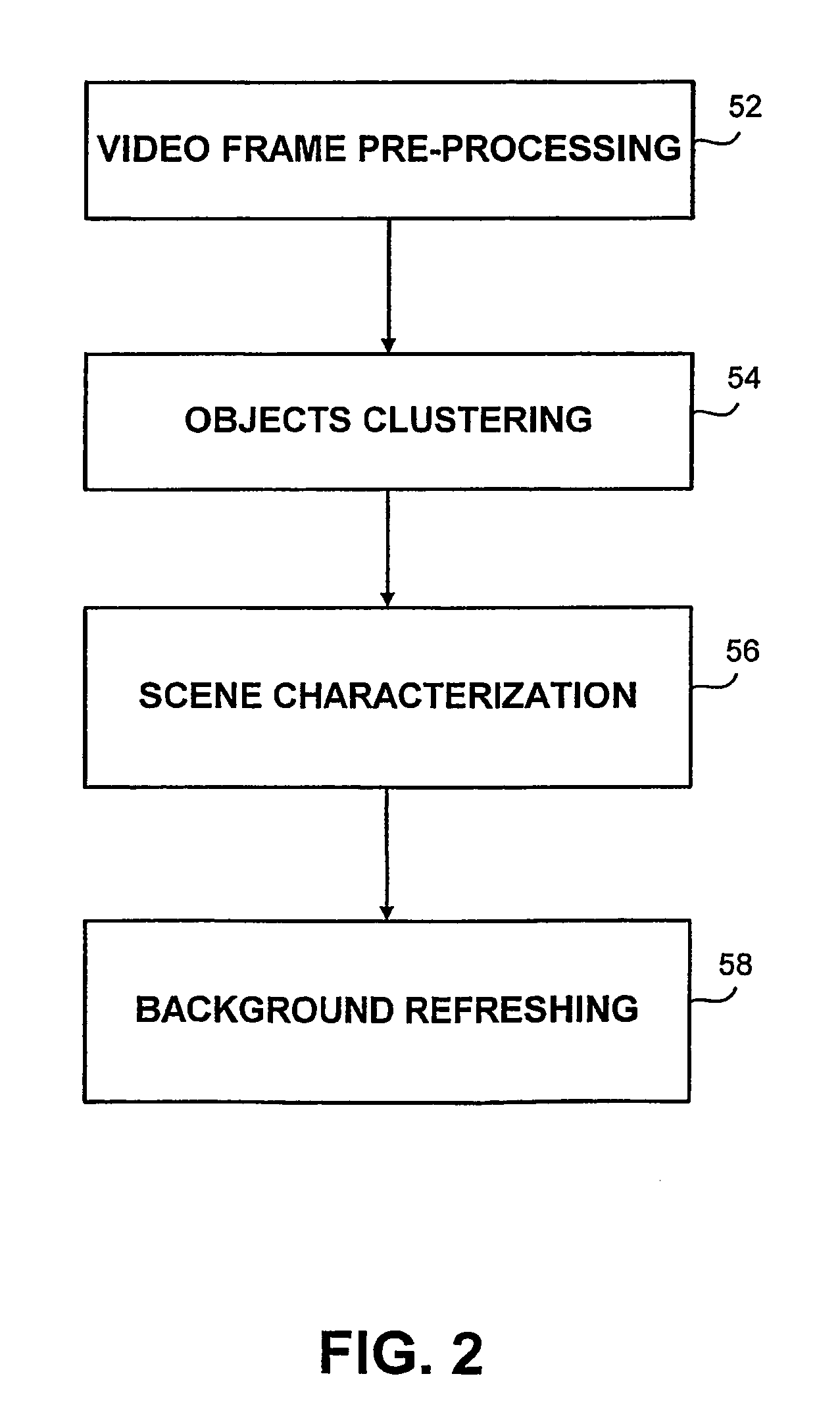System and method for video content analysis-based detection, surveillance and alarm management
a video content analysis and alarm management technology, applied in the field of video surveillance systems, can solve the problems of ineffective human-centric procedures involved, inflicting massive impact damage on the near environment and the individuals within, and substantially increasing the costs associated with the hiring of a large number of additional personnel
- Summary
- Abstract
- Description
- Claims
- Application Information
AI Technical Summary
Benefits of technology
Problems solved by technology
Method used
Image
Examples
Embodiment Construction
[0027]A monitoring and surveillance system and method for the detection of potential alarm situation via a recorded surveillance content analysis and for the management of the detected unattended object situation via an alarm distribution mechanism is disclosed. The proposed system and method includes an advanced architecture and a novel technology operative in capturing surveillance content, analyzing the captured content and providing in real time a set of alarm messages to a set of diverse devices. The analysis of the captured content comprises a unique algorithm to detect, to count and to track objects embedded in the captured content. The present invention provides a detailed description of the applications of this method. The method and system of the present invention may be implemented in the context of unattended objects (such as luggage, vehicles or persons), parking or driving in restricted zones, controlling access of persons into restricted zones, preventing loss of obje...
PUM
 Login to View More
Login to View More Abstract
Description
Claims
Application Information
 Login to View More
Login to View More - R&D
- Intellectual Property
- Life Sciences
- Materials
- Tech Scout
- Unparalleled Data Quality
- Higher Quality Content
- 60% Fewer Hallucinations
Browse by: Latest US Patents, China's latest patents, Technical Efficacy Thesaurus, Application Domain, Technology Topic, Popular Technical Reports.
© 2025 PatSnap. All rights reserved.Legal|Privacy policy|Modern Slavery Act Transparency Statement|Sitemap|About US| Contact US: help@patsnap.com



